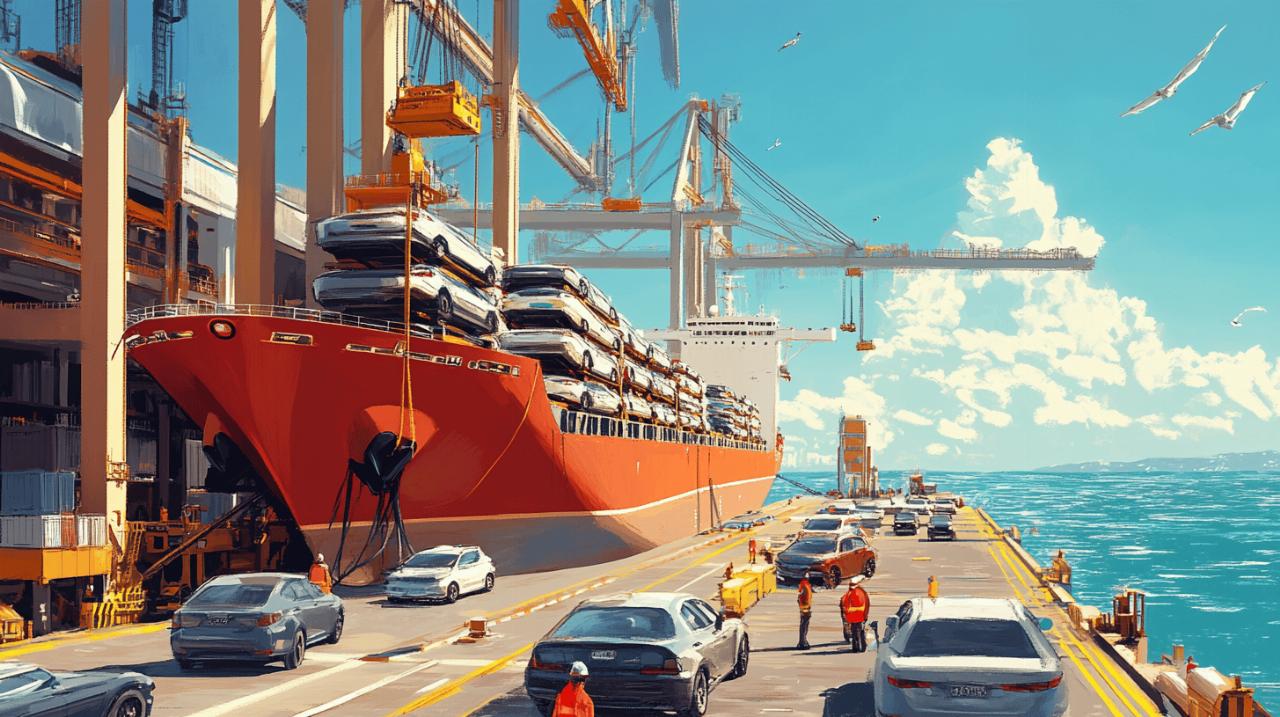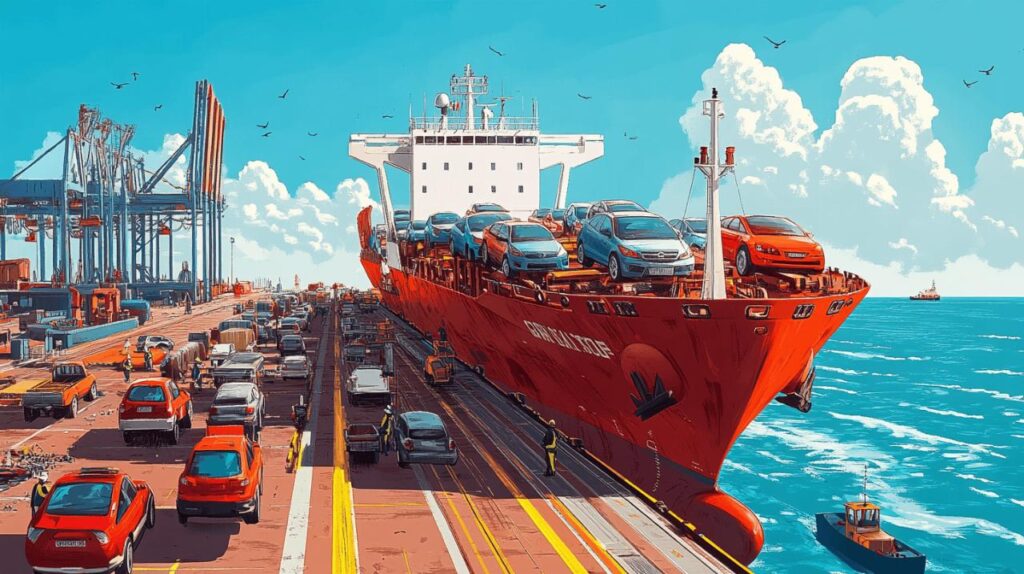Shipping a car overseas is a complex process that requires careful planning and consideration. Whether you're taking a dream holiday or moving abroad, understanding the essentials of vehicle shipping will ensure your prized possession reaches its destination safely. This guide explores the complete journey of transporting your vehicle by sea, from initial preparations to final collection.
Understanding vehicle shipping options and initial steps
When planning to transport your car by ship, the first crucial step involves researching and comparing different transport companies. The market offers numerous options, with prices typically ranging from £400 for basic services to over £2,000 for premium transport solutions. Taking time to gather multiple quotes allows you to understand the market rate for your specific requirements while evaluating the reputation of each provider.
Comparing Quotes and Selecting a Reputable Transport Company
Finding a trustworthy auto shipping company requires more than simply choosing the lowest price. Industry data suggests that companies with ratings of 4 stars or higher are generally considered reliable. When reviewing potential transport partners, investigate their accreditation status, license validity, and customer feedback. Reliable companies will provide comprehensive information about their services and won't demand full upfront payment. Strong customer service is essential for maintaining communication throughout the shipping process and addressing any concerns that might arise during transit.
Container vs ro-ro shipping: which method suits your vehicle?
The two primary methods for shipping vehicles overseas are container shipping and Roll-on/Roll-off (Ro-Ro) shipping. Container shipping places your vehicle in a dedicated shipping container, offering maximum protection from external elements and potential damage. This option is typically more expensive, costing between £1,200 and £2,000, and is particularly suitable for luxury, classic, or modified vehicles requiring extra security. Ro-Ro shipping, which functions similarly to a cargo car ferry, allows vehicles to be driven directly onto the vessel. This method is more economical, generally priced between £400 and £950, and represents approximately 75% of all car shipping transactions. It's particularly well-suited for standard vehicles, larger vans, and campervans when budget considerations are paramount.
Essential documentation and vehicle preparation
Proper documentation is critical to ensure smooth customs clearance and avoid unnecessary delays during international vehicle shipping. Planning ahead and organizing all required paperwork will significantly streamline the process.
Paperwork requirements: v5c, passport, and international documentation
The documentation needed varies depending on your destination country, but several essential items are universally required. You must have your vehicle logbook (V5C) to prove ownership, a valid passport, and potentially a carnet de passage for certain destinations. For international shipping, additional documentation may include personal information, detailed vehicle specifications, ownership records, title documentation, and bill of sale. It's advisable to research destination-specific requirements well in advance, as customs regulations differ significantly across countries. Shipping to European destinations typically involves less paperwork than transporting to more distant locations like America, Asia, or Africa.
Preparing your vehicle: cleaning, maintenance, and security measures
Thorough vehicle preparation is essential before shipping. Clean your vehicle inside and out, which not only presents it in the best condition but also facilitates inspection processes. Remove all personal belongings as these are typically not covered by shipping insurance, and statistics show that 20% of complaints during vehicle transport involve lost personal items. Check all fluid levels and ensure the vehicle is in good mechanical condition, with particular attention to the battery and braking system. Maintain the fuel level at approximately a quarter to half tank—enough to drive short distances but not so much as to add unnecessary weight. Document the current condition of your vehicle through detailed photographs from multiple angles, which will serve as evidence should any damage occur during transit. Consider additional protection measures such as car covers or padding for extra security during the journey.
The shipping process and timelines
Once your vehicle is prepared and documentation is in order, understanding the actual shipping process helps set realistic expectations about transit times and procedures.
Insurance coverage and port delivery procedures
Insurance is a non-negotiable aspect of vehicle shipping. While transport companies provide basic coverage, this may not fully protect higher-value vehicles. Evaluate the offered insurance coverage and consider supplementary protection for expensive cars. When delivering your vehicle to the departure port, arrive at the scheduled time with all required documentation. The process typically involves a thorough inspection of your vehicle, with notes made about its current condition. This inspection report forms the baseline for identifying any potential damage during transit. After completing the inspection and associated paperwork, your vehicle will be prepared for loading onto the vessel according to the selected shipping method.
Customs Clearance and Expected Transit Times to Different Destinations
Shipping companies generally handle the customs clearance process, though you may need to provide additional information or documentation. Transit times vary significantly based on destination. European shipping routes typically take less time compared to intercontinental journeys to America, Asia, or Africa. The total shipping duration is influenced by several factors including route length, specific port locations, vehicle type, and seasonal conditions. Most shipping companies now offer tracking systems that provide regular updates on your vehicle's location and estimated arrival time, offering peace of mind throughout the transit period. It's advisable to book transport at least two weeks before your desired shipping date and maintain flexibility with pickup and delivery times to avoid unnecessary complications.
Vehicle collection and final considerations
 The final stage involves collecting your vehicle at the destination port and ensuring everything is in order before taking possession.
The final stage involves collecting your vehicle at the destination port and ensuring everything is in order before taking possession.
Destination port procedures and vehicle inspection
Upon arrival at the destination port, you'll need to complete customs formalities, so have all your documentation readily available. Before accepting delivery, conduct a thorough inspection of your vehicle to identify any damage that may have occurred during transit. Compare its current state with the pre-shipping photographs and inspection report. If you discover any damage, report it immediately to the shipping company and document the issues with photographs. The shipping process concludes with the signing of a delivery receipt, confirming that you've received your vehicle in the agreed condition. Door-to-door delivery service may not be available in certain international destinations, so verify the exact collection point in advance.
Matching Your Shipping Method to Your Travel Plans and Vehicle Type
The optimal shipping method depends on your specific circumstances and vehicle. For touring Europe in a campervan, Ro-Ro shipping often provides the most cost-effective solution. For transporting a luxury or classic car for a holiday in France, enclosed container shipping offers superior protection. Consider how your shipping arrangements align with your travel plans, particularly regarding timing and pickup locations. Professional advice can be invaluable, especially when planning extensive road trips or shipping specially modified vehicles. The shipping solution should complement your overall journey, balancing cost considerations with the level of protection your vehicle requires.
Navigating collection and delivery services
Looking to get your motor shipped abroad? There's quite a bit to sort out. The shipping process includes several stages, from finding a reputable transport company to receiving your vehicle at its destination. When selecting a car transport service, you'll need to compare quotes from various companies, ensuring they're properly accredited and licensed. Most transport companies require booking at least two weeks in advance, and being flexible with pick-up and delivery times can often save you money.
Vehicle shipping costs vary based on several factors: distance, vehicle size, transport type, route complexity, and time of year. Open transport tends to be cheaper (£400-£950) and is used for about 75% of all car shipments, while enclosed transport costs more (£1200-£2000) but provides better protection for luxury or classic cars. Before your vehicle is collected, you'll need to clean it thoroughly, remove personal belongings, check fluid levels, and keep the fuel tank between a quarter and half full.
Door-to-door vs terminal-to-terminal transport options
When arranging car transport, you'll typically have two main collection and delivery options to choose from. Door-to-door service is the more convenient option, where the shipping company collects your vehicle from your specified location and delivers it directly to your destination address. This service includes a thorough vehicle inspection at both pickup and delivery points, with all necessary paperwork completed on the spot. It's worth noting that door-to-door delivery might not be available for some international destinations such as Dubai.
The alternative is terminal-to-terminal transport, where you must drop off your vehicle at a designated depot and collect it from another terminal at the destination. While this option may be less expensive, it requires more effort on your part. For international shipping, you'll need specific paperwork including personal information, vehicle details, ownership documentation, title, and bill of sale. The choice between these options largely depends on your budget, convenience requirements, and destination. Many customers find the extra cost of door-to-door service worthwhile for the added convenience and peace of mind it provides.
Vehicle tracking systems and real-time monitoring solutions
Modern vehicle shipping companies now offer sophisticated tracking systems that provide real-time updates on your vehicle's location during transit. These tracking solutions allow you to monitor your vehicle's journey, giving you peace of mind throughout the shipping process. You can typically access this information through the transport company's website or mobile application, with some providers like Speedy Freight offering dedicated tracking portals.
The tracking systems provide estimated arrival times, which can be particularly useful when planning to collect your vehicle. Shipping duration varies significantly depending on route length (typically 5-7 days for cross-country transport), location accessibility, vehicle type, and time of year. Leading transport companies now offer 24/7 customer service via multiple channels including WhatsApp, text, phone, and social media messaging services. This constant communication channel means you can get updates on your vehicle's status at any time. When your vehicle arrives at its destination, you'll complete a final inspection and sign a delivery receipt to finish the process. It's vital to thoroughly check your vehicle upon delivery and report any damage immediately.



